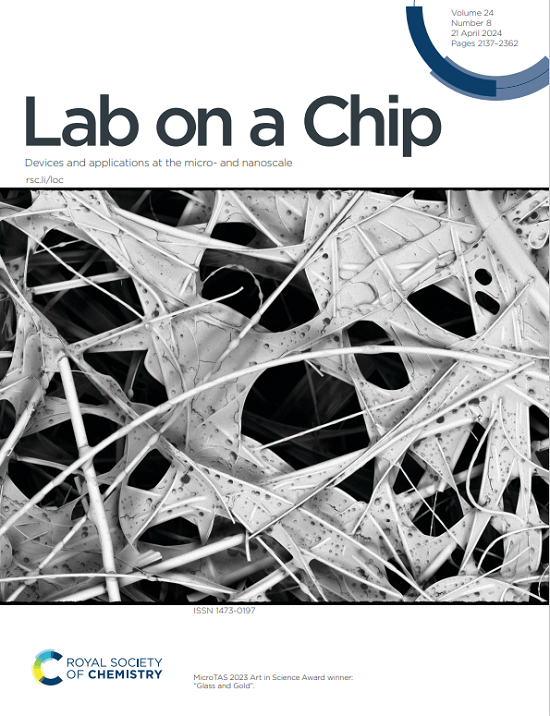A Microfluidic Device for Passive Separation of Platelet-Rich Plasma from Whole Blood
IF 5.4
2区 工程技术
Q1 BIOCHEMICAL RESEARCH METHODS
引用次数: 0
Abstract
We present a microfluidic device for separating Platelet-Rich Plasma (PRP) from whole blood, addressing key limitations in current technologies. Unlike existing methods that require complex fabrication and expensive materials, our approach uses a CO2 laser cutter to fabricate acrylic layers bonded with pressure-sensitive adhesives, making it cost-effective and simple. Operating via gravity sedimentation, the device captures blood cells in multiple trenches and processes 1 mL of whole blood—significantly more than previous sedimentation devices. To prevent bubble formation, we incorporated a hydrophilic surface at the trench bottoms, ensuring reliable PRP separation. We analyzed three trench geometries to optimize plasma yield and quality. Our device processes blood in 45 minutes, yielding ~300 µL of plasma with at least a 2-fold platelet concentration increase. Red and white blood cell removal purities are 98% and 96%, respectively. Flow simulations optimized shear rates to improve sedimentation. Only 8.2% of the total platelets were activated, compared to 31% in the centrifugation method. This combination of simplicity, cost-efficiency, and effective platelet preservation enables a low-cost method for obtaining high-quality PRP for clinical research and therapy.全血富血小板血浆被动分离的微流控装置
我们提出了一种用于从全血中分离富血小板血浆(PRP)的微流体装置,解决了当前技术的关键局限性。与需要复杂制造和昂贵材料的现有方法不同,我们的方法使用二氧化碳激光切割机制造与压敏粘合剂粘合的丙烯酸层,使其具有成本效益和简单性。该设备通过重力沉降操作,在多个沟槽中捕获血细胞,处理1ml全血——比以前的沉降设备多很多。为了防止气泡形成,我们在沟槽底部加入了亲水表面,确保可靠的PRP分离。我们分析了三种沟槽几何形状,以优化等离子体产量和质量。我们的设备在45分钟内处理血液,产生约300µL血浆,血小板浓度至少增加2倍。红细胞和白细胞的去除纯度分别为98%和96%。流动模拟优化剪切速率以改善沉降。只有8.2%的血小板被激活,而在离心法中为31%。这种简单、成本效益和有效的血小板保存相结合,使临床研究和治疗获得高质量PRP的低成本方法成为可能。
本文章由计算机程序翻译,如有差异,请以英文原文为准。
求助全文
约1分钟内获得全文
求助全文
来源期刊

Lab on a Chip
工程技术-化学综合
CiteScore
11.10
自引率
8.20%
发文量
434
审稿时长
2.6 months
期刊介绍:
Lab on a Chip is the premiere journal that publishes cutting-edge research in the field of miniaturization. By their very nature, microfluidic/nanofluidic/miniaturized systems are at the intersection of disciplines, spanning fundamental research to high-end application, which is reflected by the broad readership of the journal. Lab on a Chip publishes two types of papers on original research: full-length research papers and communications. Papers should demonstrate innovations, which can come from technical advancements or applications addressing pressing needs in globally important areas. The journal also publishes Comments, Reviews, and Perspectives.
 求助内容:
求助内容: 应助结果提醒方式:
应助结果提醒方式:


